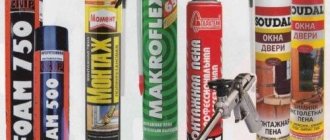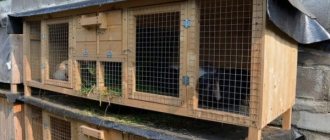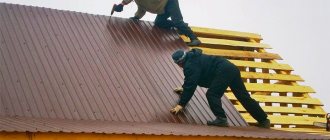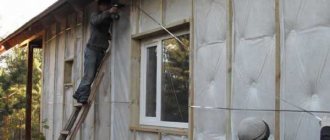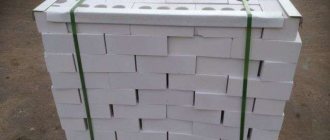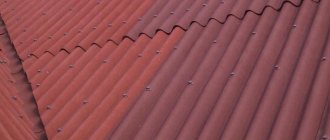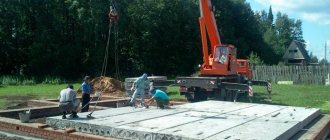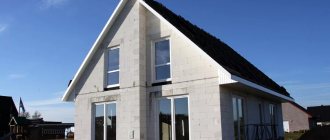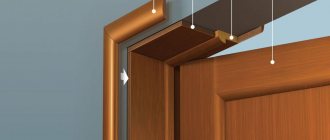You can evaluate the quality of a built house without special construction education. In the industry, there are basically two types of documents - GOSTs and SNiPs (in a new way - SP). They set out the quality requirements for absolutely all products used, including:
- materials,
- products,
- technological methods and work techniques.
To be sure of the quality of construction, it is enough to compare the actual parameters of the means used with the standard indicators that are recorded in the regulatory documents. Aerated concrete as a material must meet the conditions of GOST 31359-2007, blocks - GOST 31360-2007. The more accurate the match, the stronger, more reliable and durable the house being built will be.
What are cellular concrete blocks?
Porous concrete blocks are a building material made from the following ingredients:
- a binder, the functions of which are performed by various building materials;
- filler, which is used as sand or ash free of impurities;
- pore-forming components based on aluminum powder, lime or gelatin;
- water added to the finished dry mixture to the required level of solution plasticity.
A wall block made of cellular concrete is made in various ways. The technology for the production of cellular composites provides for the possibility of obtaining finished products using autoclave and non-autoclave methods, providing a spongy structure of porous concrete blocks.
Cellular concrete is a cheap local material
It defines the following characteristics:
- increased thermal insulation properties of walls made of porous materials;
- reduced density of blocks having a small mass with an increased volume;
- high sound insulation properties that prevent noise from penetrating into the room.
Distinctive features of cellular material:
- correct shape of products corresponding to the configuration of a rectangular parallelepiped;
- cellular structure of porous concrete, affecting its main performance characteristics;
- closed or open structure of air cavities of structural thermal insulation material;
- the presence of roughness on the surface of cellular concrete blocks, which improves adhesion;
- the concentration of air shells in the concrete mass increased to 75-85%, which determines the basic properties of the material;
- stable diameter of spherical shells, amounting to 0.5-3 mm, depending on the manufacturing technology;
- white or gray color scheme of finished products, due to the use of certain raw materials.
Blocks made from such concrete are distinguished by increased performance properties, which allows them to successfully compete with brick and wood, as well as concrete.
General description of the material, features of composition and production technology
As already mentioned, cellular concrete is a group of materials. Its representatives are foam and aerated concrete, as well as foam aerated concrete, which combines both manufacturing technologies and, as a result, properties.
- Such blocks are produced from a mixture of cement, lime, sand, blowing agent, plasticizer and other additives that improve the quality of the future material.
Gas block: composition
- Essentially, it is a mixture of a siliceous component, liquid, binder and additives that cause swelling of the solution and, as a result, the formation of cells.
- Not only sand, but also highly basic ash and other industrial waste can act as a siliceous component.
- The main binder, in addition to cement, can be: slag, mixed binder, ash, lime.
- Cement, as a rule, should be used at a grade of at least 400-500.
- Sand is mainly added quartz.
- Plasticizers are used to increase the plasticity of the solution. In this case, the blocks are of better quality. They are protected from cracking during production.
- If we talk about the foam block, the formation of cells in the solution occurs due to the addition of a foaming agent. In the case of a gas block, everything is somewhat different. Pores are formed as a result of the reaction of aluminum powder and quicklime.
- As a result, the pore structure of the materials is different: the foam block is closed, and the aerated block is open. This also affected some property values.
Structure of foam and aerated concrete
Note! The ratio of proportions when preparing the mixture directly affects the result. For example, more porous gas or foam blocks with a low cement content will be less heavy. Their thermal conductivity coefficient will be low, as will their strength and density indicators.
Component proportions
You can increase strength using some techniques - here are a few of them:
- The use of specialized additives;
- Using sand rather than ash as the silica component.
- Adding more binder as a percentage;
- Autoclave processing makes the material more durable and resistant to mechanical stress.
As for the production process, the production of both types of blocks is similar.
- First of all, the solution is mixed, which is then sent to the molds.
- They are filled to about one third, since swelling of the mixture can lead to overflow.
- After the pore formation process is completed, the product should harden slightly.
- Next, stripping is carried out.
- The last stage depends on which hardening method will be used. This can be autoclave processing or natural drying.
Hydration-hardening foam and aerated concrete can be produced by hand. This will significantly reduce the cost of construction. The above instructions are quite suitable for use.
A few words about the equipment used. If foam and gas blocks are produced in a factory, there can be two options: a set of conveyor-type machines or a stationary line of equipment.
In the first case, production will be as cost-effective as possible, automated; the volume of production can reach 200 or 300 cubic meters per day.
Conveyor type line element
In the second case, the volume will be significantly less, and the intervention of third-party workers will be required, but the price will be more affordable.
Fixed line
If the wall block is made at home, you can get by with a complete set of molds and a mixer. You can also purchase a mobile unit, with which you can produce up to 20 m3 per day.
Cellular blocks - types of building materials
Cellular blocks are classified according to the following criteria:
It is one of the varieties of lightweight concrete
- purpose of building materials;
- manufacturing technologies;
- type of binder.
Depending on their purpose, porous blocks are divided into the following types:
- structural products. They are characterized by an increased safety margin, which allows them to be used for the construction of permanent walls. The construction material is characterized by an increased specific gravity, reaching 1.2 t/m3. As the density of a material increases, its thermal conductivity increases;
- thermal insulation composites. A distinctive feature of thermal insulation composites is their low density (up to 0.5 t/m3). The blocks have low thermal conductivity. Due to the reduced load capacity, building materials cannot be used to build load-bearing walls. Thermal insulation blocks are used as insulation;
- structural and thermal insulation materials. They combine the properties of thermal insulation and structural concrete. They have a specific gravity of 0.5-0.9 t/m3. The ability of a material to store thermal energy decreases as the density of the material increases.
Depending on the technology, blocks harden under different conditions:
- in special containers where high humidity and increased pressure are maintained. In an aerated concrete mass, the cells have an open shape, which negatively affects its ability to resist moisture absorption;
- in natural conditions corresponding to the temperature and humidity of the environment. In the foam concrete mass, the air cavities are closed, which significantly increases the moisture resistance of the material.
Foam concrete and aerated concrete, despite varying degrees of water absorption, require a protective finish.
Cottages and multi-storey buildings built from cellular concrete have better thermal characteristics compared to brick ones
The blocks are made on the basis of various binding ingredients:
- Portland cement;
- lime;
- gypsum;
- ash;
- slag.
The properties of cellular composites depend on the production method, the binder used and the filler used.
Characteristics of foam and gas blocks
We have become a little familiar with the composition of the raw materials and the technological process; now it’s time to pay attention to the main set of material characteristics and their numerical values.
GOST establishes a number of requirements for the material that all manufacturers must comply with. However, due to high competition, each of them is trying to distinguish its products by modernizing manufacturing technology and changing the proportions of raw materials to improve basic qualities. Let's look at the minimum allowed by the standard and the maximum offered by manufacturers.
Technical and operational properties
Let us consider, using the table, the main properties of two representatives of the group of materials under consideration.
Table 1. Small wall blocks made of cellular concrete: technical characteristics:
| Property name | Its meaning in foam and aerated concrete blocks, comments |
| Frost resistance | The indicator is set by GOST. The minimum threshold is 25 cycles. Products intended for the construction of external walls must comply with this value in relation to the frost resistance grade. This value has not been established for partition blocks, and the frost resistance of the heat-insulating type of material is also not standardized. In practice, manufacturers assure potential consumers that the material can withstand up to 150 cycles, and the foam block – up to 100. There has not yet been confirmation from the developers, due to the insufficient period of existence and use of the blocks. |
| Average density, kg/m3 | The value ranges from 300 to 1200. As mentioned above, the density of the material largely determines the Sulfur of its application. In this regard, a classification of material was developed in accordance with the average density indicator. We'll talk about it a little later. |
| Strength, grade B | Strength grades must correspond to a certain density. The existing ones range from 1.5 to 15. |
| Thermal conductivity W*mS | The thermal insulation capacity is quite high. The coefficient can be equal to 0.08 and reach 0.34. If there is moisture during operation, this value will increase, but this will not fundamentally affect the thermal efficiency of the wall. |
| Environmental friendliness | We have already reviewed the composition and were able to verify that the mixture does not contain harmful and toxic components. |
| Fire resistance | GOST indicates the non-flammability of the material. Moreover, it can withstand high temperatures for up to several hours. |
| Vapor permeation | Both representatives are capable of vapor permeation. The most favorable climate will be created in the room, since the blocks tend to absorb excess moisture and release it when dry air predominates. |
| Soundproofing | The least durable products have the maximum soundproofing ability. In general, the structural and thermal insulation material is quite sufficient so that additional sound insulation of the room is not required. |
Types of blocks and their application
Let's take a brief look at the classifications.
Above, we already mentioned the existence of several methods of hardening and said that the block can harden by processing it in an autoclave, or naturally. In the first case, the effect is exerted by pressure exceeding atmospheric pressure and high temperature.
In the second case, light heat and moisture treatment is possible, which helps improve properties and shorten the drying process.
Non-autoclave
The autoclave is ahead of its competitor in many indicators, such as:
- Frost resistance grade and durability;
- The ratio of strength, average density and heat preservation ability;
- The autoclave curing block has better geometry and pure white color;
- It is less fragile.
In contrast, it is worth mentioning that the cost of hydration hardening products is slightly lower, by about 10%.
Synthetic and hydration hardening material
Density marked the beginning of another classification.
- Blocks characterized by a density of 300 or 400 kg/m2 are called thermal insulation. They are used, of course, in the process of thermal insulation.
Note: For this, not only blocks and slabs are used, but also monolithic material. It is actively used for sound and heat insulation of roofs, enclosing structures, and floor screeds.
- If products have a density value of 500, 600, 700, 800 or 900 (kg/m3), then they are structural and thermal insulating. With their help, you can erect a building wall or partition. They are excellent as the main material for low-rise construction.
- But if you decide to build a 3- or 4-story building, it is better to purchase a gas-foam block with an increased strength and density, that is, structural ones. They are able to withstand a larger load, and with their help you can build a building several floors high.
On a note! The range of foam concrete also includes products called structurally porous. They are especially dense. They are not produced in mass quantities, only on order. GOST does not mention their existence.
Regarding the destination:
- Walls are erected using wall blocks;
- Partitions – using partition walls;
- Stationary formwork can be constructed from y-shaped formwork. They are also used when installing door and window openings.
Y-shaped products
Blocks can have different accuracy categories, which depend on the magnitude of permissible deviations. The photo below shows the requirements of the standard.
Geometric deviations
Note! The thermal conductivity of the future wall largely depends on the category. This is explained very simply. For example, products of the first category are laid on glue, while the thickness of the seam is kept to a minimum. The result is a minimum of cold bridges.
First category
If you are laying products of the third category, you will not be able to use an adhesive composition; you must use a solution whose layer thickness will depend on deviations from the linear dimension. It can reach 2 cm or 3 cm. As a result, there are many more loopholes for cold penetration.
That is why the third category is recommended for use in the construction of non-residential buildings.
Blocks of the third category look unpresentable
Wall blocks can have a smooth surface or have a groove and tongue. In the latter case, laying the wall will be much easier, and a beginner will have the opportunity to build an almost ideal surface.
Foam blocks are also produced in the form of products with a textured front surface. Purchasing these will save the developer from the need to finish the outside of the building.
Positive and negative aspects of the material
Table 2. Advantages of foam and aerated concrete:
| The values of density and strength allow the material to be used both as insulation and in the construction of load-bearing structures. |
| Provides cost reduction for building insulation. |
| Indicates the durability of the future structure and its weather resistance. |
| Eliminates harmful effects. Allows the use of products in the construction of specialized institutions. |
| Also an equally important advantage. The possibility of a building fire is reduced. |
|
|
| The products can be processed relatively easily and this, you see, is convenient. |
| A particularly important plus, indicating the possibility of reducing costs when constructing a foundation, since the construction of a massive foundation is not at all necessary when building a lightweight structure. |
| The construction process will be significantly accelerated due to the dimensions. |
| Any developer can try himself as a manufacturer. This is not only a useful experience, but also a cost reduction. |
| Low price | This group of materials is highly competitive not only due to its qualities, but also due to its reasonable price. |
| Unfortunately, this property characterizes both representatives of the group. |
| Despite the fact that foam concrete has this ability reduced to 10-16% due to the closed pore structure, it still needs protection. For aerated concrete the value is 25%. |
| They are afraid of the mechanical effects of the product. |
| Any hardware will not work. This is due to the characteristics of the material |
| Requires planning for securing heavy objects at the project level and strengthening them. |
What are the advantages of cellular concrete blocks?
Building stone with a porous structure has a number of advantages:
- reduced thermal conductivity compared to other building materials. Concrete used as a heat insulator reduces heat loss;
- increased dimensions with low weight. These characteristics allow you to increase the speed of wall laying and also simplify transportation;
- increased vapor permeability. The cellular structure of the concrete composite facilitates the unhindered release of steam, which allows for comfortable humidity;
- resistance to open fire and elevated temperatures. The structure of porous concrete is preserved in the event of fire hazardous situations.
Due to their advantages, blocks are widely used in low-rise construction.
This material is successfully used by both professional builders and individuals who build a cottage for themselves.
Comparison with brick and wood
The positive performance characteristics of cellular concrete blocks allow them to successfully compete with wood and stone. Let's look at the features of the materials:
- Machinability. Nails are easily hammered into the block, it can be processed with a plane, and quickly sawed with a hacksaw.
- Weight. Unlike heavy bricks, cellular blocks are lighter. This makes it possible to use products of increased dimensions and significantly reduce the consumption of material for connecting seams. Low weight allows savings to be achieved when transporting composites to the construction site. It is convenient to erect buildings using porous compounds on soils with low bearing capacity and use light, less massive columnar foundations for buildings
Comparison table for the thermal conductivity of cellular concrete with brick and wood
- Flammability. The composite is fire-resistant, which makes it advantageously superior to wood.
- Ability to conduct heat. Due to its high porosity, the leader is the foam composition, which has low thermal conductivity and is similar in characteristics to wood.
- Frost resistance. The structural features of porous concrete and brick allow them to retain their properties for 100 freezing cycles.
- Strength. The porous composite is quite hard, but less durable compared to brick, which is due to the structure. Having decided to build a building with a ceiling made of heavy slabs, use bricks for load-bearing structures that can withstand an increased load per unit area.
- Ability to absorb moisture. The water absorption coefficient characterizes the volume of water that a material can absorb. Brick can absorb moisture in a volume of 8-12% of the mass. It is superior to cellular compositions, which have water absorption of up to 20%, and it is generally difficult for wood to compete with them.
Having analyzed the parameters, it is difficult to confidently determine what is preferable to use for the construction of a building: porous compounds or ordinary bricks. It is clear that wood has a limited scope. Materials have their advantages and disadvantages, which must be taken into account when choosing raw materials for construction.
Wall blocks made of cellular concrete - material features
Porous concrete blocks have the following features:
- good workability. It is easy to make a hole in block building materials or cut the block into pieces;
- resistance to temperature changes. The material retains the structure of the array during repeated freezing and thawing;
- resistance to biological factors. Fungal colonies and microorganisms do not develop inside the block and on its surface;
- long period of operation. Concrete retains its performance and strength for a long time.
When deciding to purchase porous composites, carefully study their features.
Positive features of foam concrete blocks
Blocks made of cellular concrete are characterized by resistance to frost. There is enough space inside for water, which can freely expand when freezing without damaging the structure of the products. That is why at low temperatures there will be no expansion inside and outside.
Foam concrete is also chosen because of its fire resistance. The material can be exposed to open fire for 4 hours without being damaged, the structure will not become cracked, and explosions will not occur. Biostability and environmental friendliness are also excellent. Foam concrete blocks do not rot and do not deteriorate at all over time. During installation and operation, foam concrete does not emit harmful substances.
If we compare it with gas silicate, the latter is less safe in this regard. This is explained by the fact that in an autoclave, when foaming, small elements of aluminum and lime react, resulting in the formation of hydrogen. It is released in small quantities later, while foam blocks are produced using foaming agents that do not contain hazardous gases. The pores of this material are sealed, so their structure resembles foam cells.
Properties of cellular concrete blocks
The main properties of cellular blocks:
- ability to retain heat in a room;
- different susceptibility to moisture.
The thermal conductivity of a material is proportional to density. Lighter composites with an increased pore concentration retain heat better.
Much also depends on the raw materials that the manufacturer uses, on the equipment on which the blocks are cut
The ability to absorb moisture can be easily determined experimentally:
- foam concrete with closed air cavities slowly absorbs liquid, remaining afloat;
- an aerated concrete block with an open form of internal pores intensively absorbs moisture and quickly sinks.
The ability to absorb moisture affects the frost resistance of the material. In the absence of a protective finish, the wet block will crack as a result of the expansion of the liquid during crystallization.
Main characteristics of cellular blocks
- The strength of cellular concrete is 35 - 150 kg/cm2, depending on the density and grade of material. The volumetric weight of cellular concrete is directly related to its density and is designated by the grade of material D300 - D1200. The numerical indicator characterizes the mass of 1 m3 of blocks. The thermal conductivity of cellular concrete is directly proportional to its density and amounts to 0.11 - 0.16 W/m deg. The frost resistance of cellular concrete is directly related to its density and is 35 - 75 cycles. Shrinkage deformation during drying is 0. 35 - 0.47 mm/m. The fire resistance of the material complies with GOST 30244-94. The water absorption of foam concrete is in the range of 12-70% depending on the brand, for gas silicate - 20-35%. The cost of the material varies depending on its density and is approximately 2300 – 3700 rubles/m3. Cellular concrete as an element of the supporting structure is used for two-story construction with light floors.
Main characteristics of cellular concrete composites
Main characteristics of cellular concrete blocks:
- strength ranging from 35 to 150 kg per square centimeter of area;
- the amount of shrinkage deformation not exceeding 0.5 mm per meter of masonry;
- the degree of moisture absorption, which for various types of concrete ranges from 15 to 60%.
The size of the products is determined by the dimensions of the molding container. Blocks measuring 60x30x20 cm, as well as 40x20x20 cm, are widely used for building walls. For the construction of interior partitions and ceilings, foam concrete has a reduced thickness.
Purpose
Cellular concrete blocks, depending on the pore concentration, have different areas of application and are conventionally divided into the following types:
- structural compositions with a density of 600–1200 kilograms per cubic meter;
- thermal insulation composites, with a specific gravity of 400–600 kilograms per cubic meter.
Porosity determines the density of the product. As the volume of cavities increases, sound insulation and heat protection characteristics increase, but strength decreases. Therefore, when constructing permanent external walls of a building, which require increased strength, a denser porous material is used. Products for structural purposes are used for the construction of:
- capital walls;
- internal light-loaded walls;
- partitions.
Cellular blocks are well suited for the construction of houses of any complexity
Construction thermal insulation measures are carried out using thermal insulation elements that allow:
- insulate the surfaces of reinforced concrete floors;
- create a thermal insulation contour of multilayer wall structures;
- thermally insulate attic floors;
- provide thermal insulation of special equipment, the surface of which is heated to 700°C, using heat-resistant mixtures;
- protect the surfaces of pipelines and technological equipment, the operating temperature of which rises to 400°C.
Multi-storey buildings and private buildings made of porous concrete have increased thermal properties compared to brick buildings.
Reduced dimensional tolerances of products allow masonry to be carried out using special glue with a seam thickness of up to 3 mm. Thanks to this, there are no cold bridges that form when laying on cement mortar.
Where are cellular blocks used?
These blocks are used to build various buildings:
- residential buildings no more than three floors high;
- outbuildings and garages;
- industrial premises;
- country houses.
The main advantage of aerated concrete over other wall materials is the thermal insulation properties of the material.
Porous composites are used for the construction of:
- load-bearing and internal walls;
- interior partitions;
- thermally insulated floors.
The heat-saving properties of the material make it possible to use it for insulation of building structures.
What is this material?
So, this is an artificial stone in the form of a block, which has a porous structure and, accordingly, low thermal conductivity. That is why these blocks are used as insulation. Currently, manufacturers offer two varieties:
- Gas blocks.
- Foam blocks.
Gas blocks
Both types are based on three main components: cement, sand and water. But during the production of aerated blocks, lime and aluminum powder are additionally added to the cement-sand mixture, which, when combined, enter into a chemical reaction. This releases gas, which creates pores inside the solution.
The most important thing is that the manufacturing technology of such wall material includes steam treatment of products. All this happens in autoclaves.
Foam blocks
To produce foam blocks, a special foaming agent is required. It is simply added to the prepared solution and mixed well. At the same time, coming into contact with all components of the mixture, it begins to enter into a chemical reaction with them, releasing a large amount of foam. This leads to the formation of pores.
Foaming agent is a non-deficient material; it can be synthetic or protein. Some developers make it with their own hands from rosin and glue.
Nuances of block laying technology
Masonry technology has its own characteristics. Important points:
- the laying of blocks is carried out at positive temperatures or glue with anti-frost additives is used;
- defects and irregularities on the surface of the blocks are eliminated with a grater for grinding;
- the sequence of operations provides for the initial installation of corner blocks;
- block rows are reinforced with steel reinforcement at intervals of 3 levels.
The use of glue instead of cement mortar allows you to avoid the formation of cold bridges and create thin joint areas.
Dimensions of aerated concrete blocks according to GOST 31360-2007 and 21520-89
As often happens, several regulatory documents are in force at once, which creates some confusion in labeling. In addition, the dimensions of aerated concrete blocks are also determined differently by these standards. The older standard prescribes exact values in millimeters for the length, width and height of the block. It also introduces differences for masonry with mortar or glue. With mortar, the seam is larger and the block sizes are smaller. When laying with glue, the thickness of the seam is smaller, the blocks are larger.
Dimensions of aerated concrete blocks according to the old standard
The block size itself is encoded with a Roman numeral. This is, of course, inconvenient. It is necessary to remember the correspondence or have a correspondence table with you. In addition, increased requirements for energy efficiency of houses have led to the fact that cellular concrete is placed only with glue. Cement mortar is not used, since it acts as a cold bridge in the masonry, thereby worsening the overall performance of the wall. An example of marking according to the old standard: I-B2.5D500F35-2. This means that the block is of the first standard size (188*300*588 mm), compressive strength B2.5, average density D500 and frost resistance F35, accuracy category 2.
The most common sizes of aerated concrete blocks
The new GOST simply introduces two concepts: aerated concrete block and slab. For each of them, maximum sizes are determined. The exact dimensions are not determined.
Maximum dimensions of aerated concrete blocks and slabs according to the new standard
Labeling according to the new standard is simpler. The block dimensions must be indicated in millimeters. For example, Block I / 600×300×200 / D500 / B2.5 / F25. Here the category (the permissible error in size is indicated by the Roman numeral I or II) has been moved to the beginning, the order of the characteristics has been changed, but their list remains the same.
Category of maximum deviations
Both standards prescribe possible deviations in size and defects in the form of violations of squareness, curvature of edges and edges, and chips. These defects affect the block's category. Previously, there were three of them: one for masonry with glue, two for masonry with mortar. The new standard describes only two categories.
Maximum deviations from the dimensions of aerated concrete blocks
Overall, the marginal deviations are small by both standards. But foam blocks of the first category have greater accuracy. Precise geometry means less consumption of expensive glue. But even with second-class material you can achieve low consumption. True, this will require additional effort and time. The secret is simple - blocks that are too large are trimmed using a regular plane, adjusting the dimensions.
Recommendations
Composite blocks can solve many problems. When deciding what to build the walls and ceilings of a foam block house from, as well as how to cover the cellar, it is advisable to give preference to porous composites. In terms of thermal insulation properties, they are superior to blocks made of shavings and cement, as well as other materials. When planning to build your own home, also learn how to pour a monolithic floor slab. The reduction of heat loss will be ensured by the DSP board; its use for flooring is economically justified.
Advantages and disadvantages
Like any material, cellular concrete is not without its pros and cons.
- One of the most significant qualities is the thermal conductivity indicator. The material has a fairly high ability to maintain temperature, which significantly increases its value. This fact is easily explained: it’s all about the structure of the material, the pores of which contain air, which is a heat insulator. This characteristic is combined with sufficient strength.
As a result, the use of cellular concrete products in construction in the form of blocks will significantly reduce the cost of insulation, and in the future, heating costs. Soundproofing characteristics are also at a high level.
- The material is safe for the environment and humans. It does not emit harmful substances into the atmosphere.
- Products made from cellular concrete are easy to handle, which significantly increases the speed of construction and makes it possible to build structures with your own hands. In addition, the material is relatively light, which, in turn, reduces the load on the foundation when constructing walls using such blocks.
- High seismic resistance of structures built from this material.
- The combination of strength, density and weight leaves many building materials behind.
- The ability to vapor permeate allows buildings built using cellular concrete to “breathe”. Thus, a favorable microclimate is established in the room.
- Since the composition of cellular concrete is characterized by the presence of mineral components, the material does not rot or undergo other biological damage.
- The durability of cellular concrete is high. According to the manufacturers, a house built from this material will last at least 50-60 years.
Despite the large number of advantages, cellular concrete also has disadvantages. Its use causes some difficulties and the material cannot be called universal.
Let us once again pay attention to the fact that cellular concrete is a porous material. This fact is both a plus and a minus.
The thing is that the products have high water absorption capacity. Accumulated moisture can crystallize during periods of predominance of negative temperatures, and cause irreparable damage to the structure of the cellular concrete product. In this regard, such buildings require technically correct finishing both outside and inside the building.
Products made from cellular concrete are fragile. Most often this occurs during transportation and during work, when mechanical stress is most likely.
However, these shortcomings can be completely mitigated. In the first case, through properly executed masonry, finishing and correctly selected materials, and in the second, through careful handling.
Note! Cellular concrete requires special treatment and care when using. Defects in cellular concrete that appear in finished structures are, for the most part, of the same type and are directly related to improper use, masonry, lack of reinforcement or finishing.
